Responses of Neurons in the Medullary Lateral Tegmental Field and Nucleus Tractus Solitarius to Vestibular Stimuli in Conscious Felines
- PMID: 33391176
- PMCID: PMC7775595
- DOI: 10.3389/fneur.2020.620817
Responses of Neurons in the Medullary Lateral Tegmental Field and Nucleus Tractus Solitarius to Vestibular Stimuli in Conscious Felines
Abstract
Considerable evidence shows that the vestibular system contributes to adjusting sympathetic nervous system activity to maintain adequate blood pressure during movement and changes in posture. However, only a few prior experiments entailed recordings in conscious animals from brainstem neurons presumed to convey baroreceptor and vestibular inputs to neurons in the rostral ventrolateral medulla (RVLM) that provide inputs to sympathetic preganglionic neurons in the spinal cord. In this study, recordings were made in conscious felines from neurons in the medullary lateral tegmental field (LTF) and nucleus tractus solitarius (NTS) identified as regulating sympathetic nervous system activity by exhibiting changes in firing rate related to the cardiac cycle, or cardiac-related activity (CRA). Approximately 38% of LTF and NTS neurons responded to static 40° head up tilts with a change in firing rate (increase for 60% of the neurons, decrease for 40%) of ~50%. However, few of these neurons responded to 10° sinusoidal rotations in the pitch plane, in contrast to prior findings in decerebrate animals that the firing rates of both NTS and LTF neurons are modulated by small-amplitude body rotations. Thus, as previously demonstrated for RVLM neurons, in conscious animals NTS and LTF neurons only respond to large rotations that lead to changes in sympathetic nervous system activity. The similar responses to head-up rotations of LTF and NTS neurons with those documented for RVLM neurons suggest that LTF and NTS neurons are components of the vestibulo-sympathetic reflex pathway. However, a difference between NTS/LTF and RVLM neurons was variability in CRA over time. This variability was significantly greater for RVLM neurons, raising the hypothesis that the responsiveness of these neurons to baroreceptor input is adjusted based on the animal's vigilance and alertness.
Keywords: cardiovascular regulation; lateral tegmental field; nucleus tractus solitarius (NTS); reticular formation; rostral ventrolateral medulla; sympathetic nervous system; vestibular; vestibulo-sympathetic responses.
Copyright © 2020 Bielanin, Douglas, Shulgach, McCall, Miller, Amin, Murphey, Barman and Yates.
Conflict of interest statement
The authors declare that the research was conducted in the absence of any commercial or financial relationships that could be construed as a potential conflict of interest.
Figures


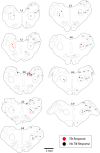

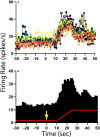

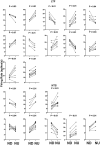
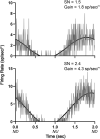

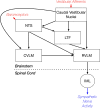
Similar articles
-
Responses of neurons in the rostral ventrolateral medulla of conscious cats to anticipated and passive movements.Am J Physiol Regul Integr Comp Physiol. 2020 Mar 1;318(3):R481-R492. doi: 10.1152/ajpregu.00205.2019. Epub 2020 Jan 15. Am J Physiol Regul Integr Comp Physiol. 2020. PMID: 31940234 Free PMC article.
-
Processing of vestibular inputs by the medullary lateral tegmental field of conscious cats: implications for generation of motion sickness.Exp Brain Res. 2013 Mar;225(3):349-59. doi: 10.1007/s00221-012-3376-1. Epub 2012 Dec 29. Exp Brain Res. 2013. PMID: 23274644 Free PMC article.
-
Responses of neurons in the rostral ventrolateral medulla to whole body rotations: comparisons in decerebrate and conscious cats.J Appl Physiol (1985). 2011 Jun;110(6):1699-707. doi: 10.1152/japplphysiol.00180.2011. Epub 2011 Apr 14. J Appl Physiol (1985). 2011. PMID: 21493724 Free PMC article.
-
Role of the medullary lateral tegmental field in sympathetic control.J Integr Neurosci. 2017;16(2):189-208. doi: 10.3233/JIN-170010. J Integr Neurosci. 2017. PMID: 28891509 Review.
-
Role of the central nucleus of the amygdala in the control of blood pressure: descending pathways to medullary cardiovascular nuclei.Clin Exp Pharmacol Physiol. 2005 May-Jun;32(5-6):450-6. doi: 10.1111/j.1440-1681.2005.04210.x. Clin Exp Pharmacol Physiol. 2005. PMID: 15854157 Review.
Cited by
-
Physiological changes associated with copper sulfate-induced nausea and retching in felines.Front Physiol. 2023 Jan 19;14:1077207. doi: 10.3389/fphys.2023.1077207. eCollection 2023. Front Physiol. 2023. PMID: 36744037 Free PMC article.
References
-
- Guyenet PG, Koshiya N, Huangfu D, Baraban SC, Stornetta RL, Li YW. Role of medulla oblongata in generation of sympathetic and vagal outflows. In: Holstege Bandler GR, Saper CB. editors. Emotional Motor System. Amsterdam: Elsevier; (1996). p. 127–44. - PubMed
Grants and funding
LinkOut - more resources
Full Text Sources
Miscellaneous

